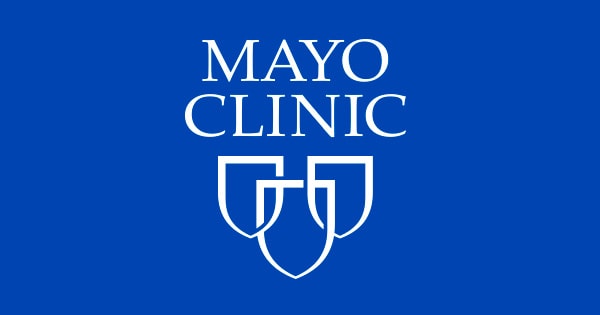— Study supports hypothesis that placental abnormalities are intertwined with brain development
by
Nicole Lou, Senior Staff Writer, MedPage Today
March 1, 2024
Among babies with severe congenital heart disease (CHD), neurological abnormalities tended to cluster in those who had been exposed to some placental pathology while still in the womb, a single-center prospective study found.
Severity of placental pathology was negatively correlated with the child’s cortical gray matter, cerebellar, and total brain volumes based on preoperative cerebral MRIs taken at a median postnatal age of 4 days and postmenstrual age of 39.5 weeks.
Observed placental abnormalities included maternal vascular malperfusion lesions (46%), nucleated red blood cells (37%), chronic inflammatory lesions (35%), delayed maturation (30%), and placental weight below the 10th percentile (28%), reported Manon Benders, MD, PhD, of Wilhelmina Children’s Hospital in Utrecht, the Netherlands, and colleagues of the CHD LifeSpan Study Group.
“To summarize, the placental abnormalities identified in this cohort suggest that the cause of placental pathology in CHD is likely multifactorial, including lesions that are developmental in origin as well as lesions that arise due to changes in maternal and fetal hemodynamics,” the authors wrote in the Journal of the American Heart Association.
“Their data are the first to support the widespread hypothesis that placental abnormalities are intricately intertwined with brain development in CHD,” wrote Cynthia Ortinau, MD, MSCI, of Washington University in St. Louis, and Jane Newburger, MD, MPH, of Boston Children’s Hospital and Harvard Medical School, in an accompanying editorial.
“Taken together, these data suggest that placental dysfunction has the greatest impact on brain regions that are developing the most rapidly in the third trimester, when metabolic requirements are higher than in other periods,” the duo commented.
As for brain injury in their study, Benders and colleagues reported that available scans showed no excess ischemic or hemorrhagic brain injury with greater placental pathology severity.
However, this could be because the authors could not account for several possible mediators of a placenta-brain relationship, the editorialists suggested. The study’s exclusion criteria included genetic or chromosomal disorders, multiple gestation pregnancies, gestational age at birth under 36 weeks, or major extracardiac anomalies.
Prior work established that children with fetal congenital heart disease are at greater risk of postnatal brain injury and adverse long-term neurodevelopmental outcomes. Despite continued improvement in the treatment of severe CHD over the years, affected children “remain at risk for neurodevelopmental sequelae, such as cognitive, motor, and behavioral problems, with reported incidence rates ranging from 20% to 60%,” Benders and colleagues noted.
“Although these neurologic abnormalities have predominantly been attributed to cerebral vulnerability in the critical neonatal period surrounding cardiac surgery, there is growing evidence that brain aberrations already develop in utero,” they wrote.
“Our findings underline the importance of monitoring placental health and evaluation of the placenta by an experienced perinatal pathologist in pregnancies with fetal CHD,” Benders’ team maintained. “Ultimately, targeting placental pathology may hold promise as a prenatal intervention for improving neurodevelopmental outcomes in CHD.”
For their study, Benders and colleagues analyzed placentas from 96 term singleton pregnancies of children who had been antenatally diagnosed with severe isolated CHD and expected to undergo a cardiac intervention in the first 6 months of life.
Most CHD cases involved a transposition of the great arteries (31%), single ventricle defect with aortic obstruction (24%), or biventricular defect with aortic arch obstruction (23%).
The babies scored a median 10 in placental pathology from a range of zero to 33, though study authors acknowledged that they scored this according to a non-validated scale.
Moreover, the absence of a control group precluded any analysis of causation.
“A myriad of complex, intersecting factors within the maternal-fetal environment could cause abnormal placental and brain development, thereby predisposing to adverse postnatal neurological and developmental outcomes in CHD,” the editorialists cautioned.
“It is still uncertain whether placental abnormalities reflect early maldevelopment from genetic/epigenetic disturbances that also cause fetal cardiac and brain defects, whether the fetal cardiac defect causes placental and fetal brain abnormalities through hemodynamic alterations, or whether additional pathways … play a role in disrupting typical development across the placenta and brain in CHD,” Ortinau and Newburger wrote.
![author['full_name']](https://clf1.medpagetoday.com/media/images/author/nicoleLou_188.jpg)
Nicole Lou is a reporter for MedPage Today, where she covers cardiology news and other developments in medicine. Follow
Disclosures
The study was supported by the Dutch Organization for Health Research and Development.
Benders and co-authors had no disclosures.
Ortinau and Newburger disclosed institutional support from the NIH, the Kenrose Kitchen Table Foundation, and the Farb Family Fund.
Primary Source
Journal of the American Heart Association
Source Reference: Nijman M, et al “Placental pathology contributes to impaired volumetric brain development in neonates with congenital heart disease” J Am Heart Assoc 2024; DOI: 10.1161/JAHA.123.033189.
Secondary Source
Journal of the American Heart Association
Source Reference: Ortinau CM, Newburger JW “Placenta-heart-brain connection in congenital heart disease” J Am Heart Assoc 2024; DOI: 10.1161/JAHA.124.033875.
Note: This article have been indexed to our site. We do not claim legitimacy, ownership or copyright of any of the content above. To see the article at original source Click Here













